Getting great testimonials from happy customers is hugely beneficial for any business. Customer testimonials serve as social proof that your product or service delivers tangible value. They build trust with potential customers and convince them to buy.
Here are the key things this guide will cover in creating a fantastic testimonial page:
Key Takeaways
- Testimonials help boost conversions by building credibility and trust
- Get creative with video, images, quotes, and complete case studies
- Curate a variety of genuine customer stories and quotes
- Spotlight diverse, detailed testimonials on a dedicated page
- Optimized testimonial pages can significantly improve your marketing
- Encourage and gather reviews across various platforms
Why Testimonials Are Essential for Conversions
Customer testimonials are critical social proof that your brand delivers on its promises. They lend third-party credibility far more convincing than simply telling potential customers to trust you.
Instead, real customer stories and quotes demonstrate how you solved problems and delivered value. This builds trust and makes visitors more confident in buying from you.
Over 70% of customers report positive reviews, making them more likely to use a business. Online reviews are effectively REQUIRED today to demonstrate quality and compete in any niche.
Put: Great testimonials directly lead to more conversions and customers.
That’s why intelligent businesses actively collect, optimize, and display genuine customer feedback across their website and other marketing materials.
11 Testimonial Examples To Inspire Your Page
The most critical step is gathering a solid base of customer success stories, quotes, and case studies. You want diverse, detailed examples that highlight your best qualities.
Here are 11 great testimonial examples from leading companies:
1. Basecamp
Basecamp’s testimonial page features direct quotes in large text, laid over compelling customer images:
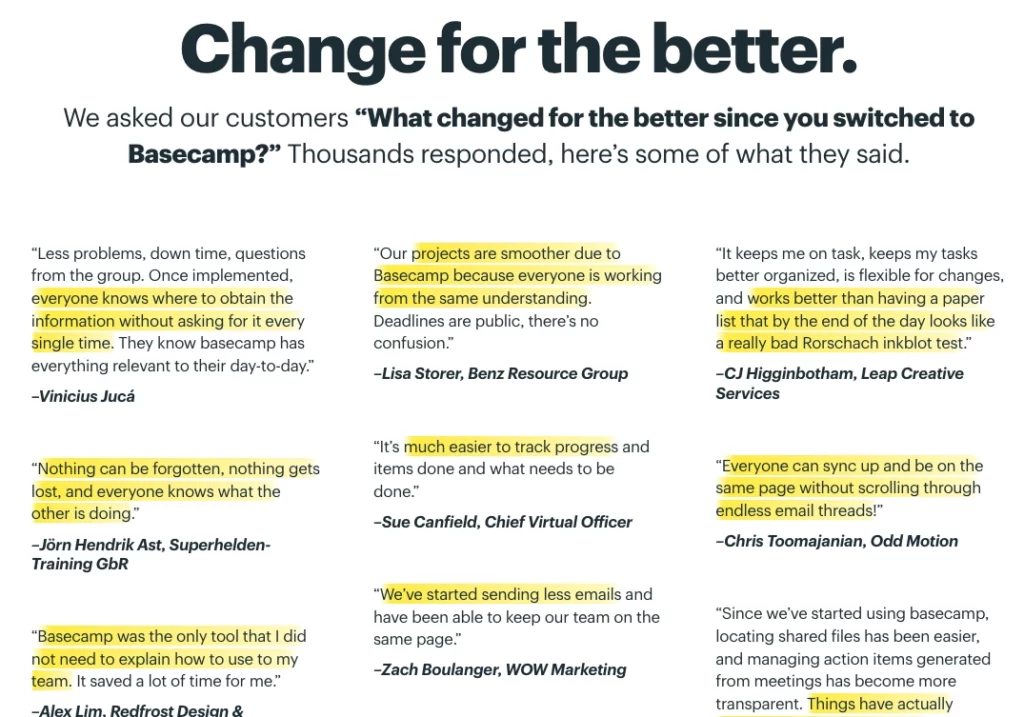
Notice the variety – quotes from small business owners; testimonials focused on specific features, and various backgrounds represented.
2. HubSpot
Hubspot incorporates video testimonials directly on key service pages:

This immediately shows visitors that the CRM platform works for real customers.
3. Nextiva
The Nextiva testimonials page heavily incorporates logos alongside quotes:
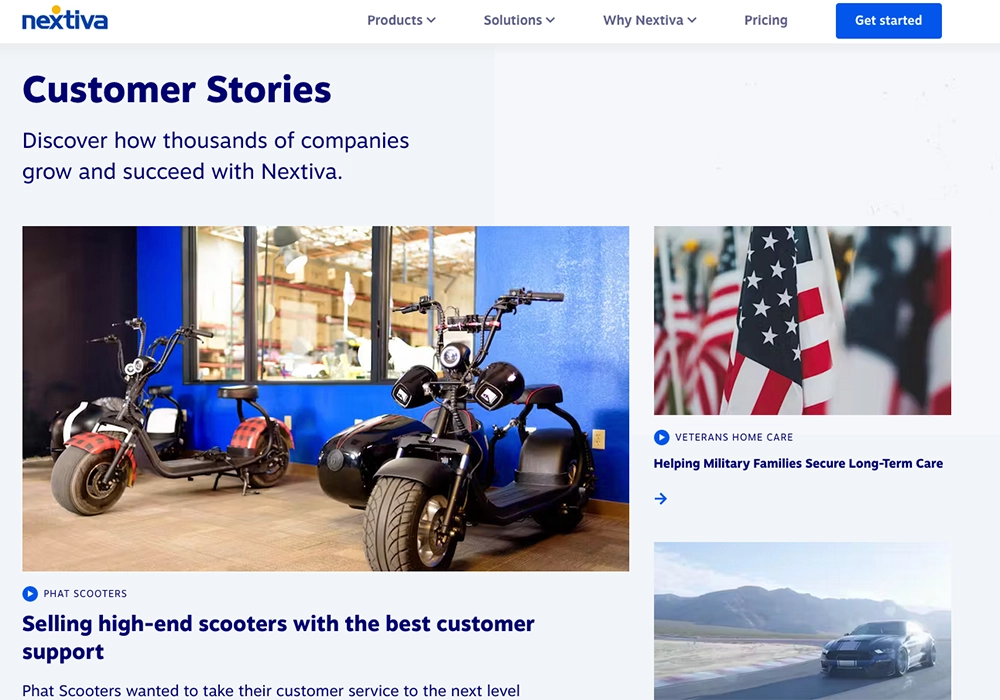
Logos significantly add another layer of credibility when visitors recognize major brands your business serves.
4. Duolingo
Duolingo takes a unique approach by profiling specific customer stories in an extended case study format:
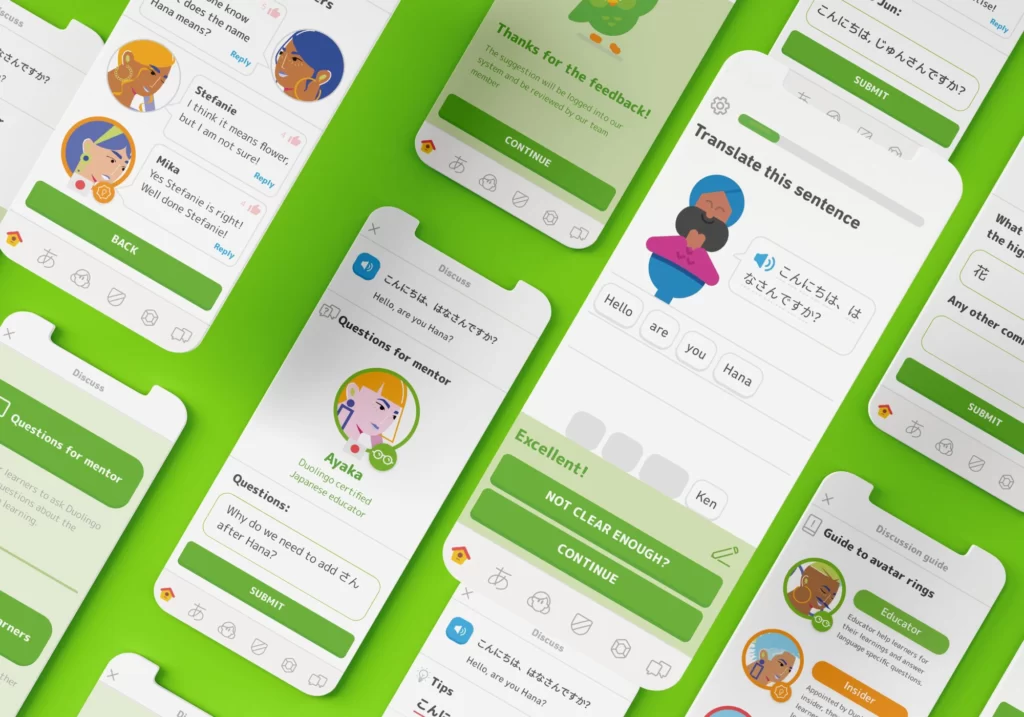
Full stories let visitors relate to customers from an emotional level, not just claims about the product’s features.
5. Shopify
Shopify does an excellent job collecting testimonials from recognizable brands that potential e-commerce customers aspire to emulate:

When visitors see other reputable companies using your product, it also gives them the confidence to buy.
6. Slack
Slack features compelling customer quotes right at the top of critical pages as you scroll down:

Prominent positioning gets those social proof benefits working early in the visitor journey.
7. Warby Parker
Warby Parker does an excellent job incorporating customer images alongside testimonials:
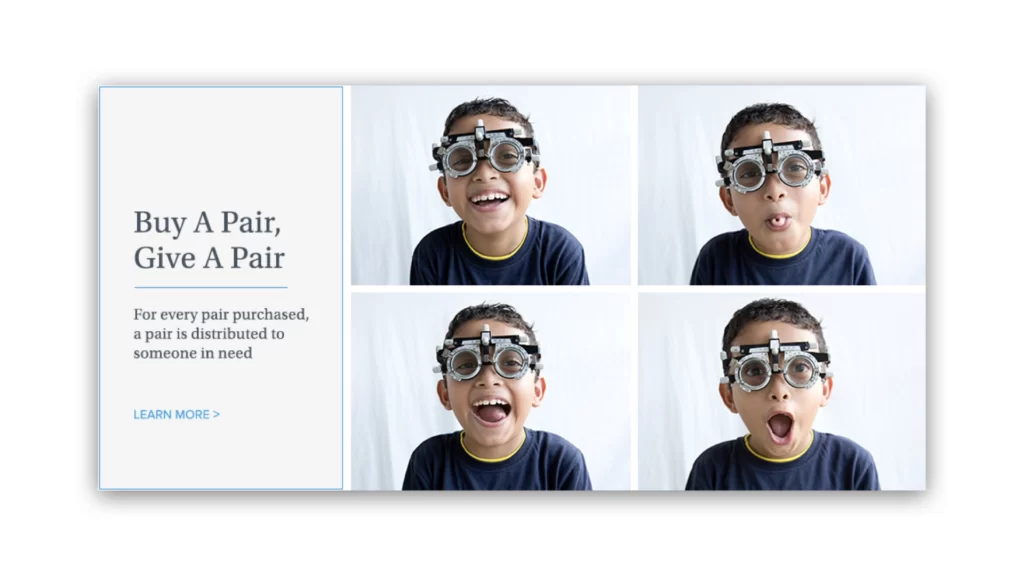
Photos of real customers give visitors images they can identify with.
8. Envoy
The Envoy customer stories structures customer quotes in an easy-to-scan format sorted by industry:
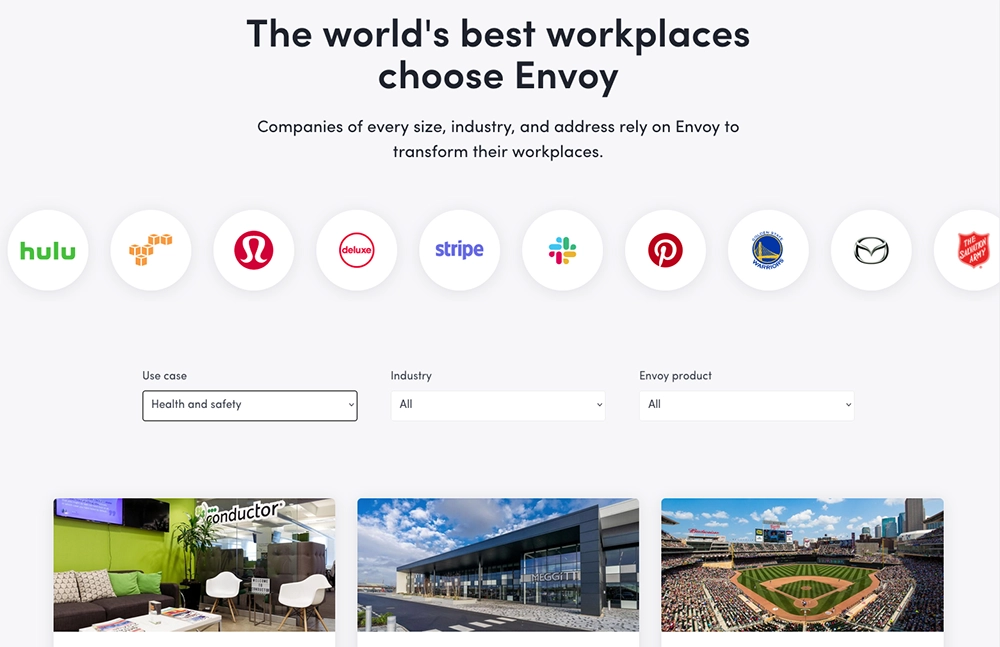
This lets visitors quickly hone in on the areas most relevant to their business.
9. SolisWifi
Soliswifi features compelling stories of travel influencers showcasing how their products enable global internet freedom:
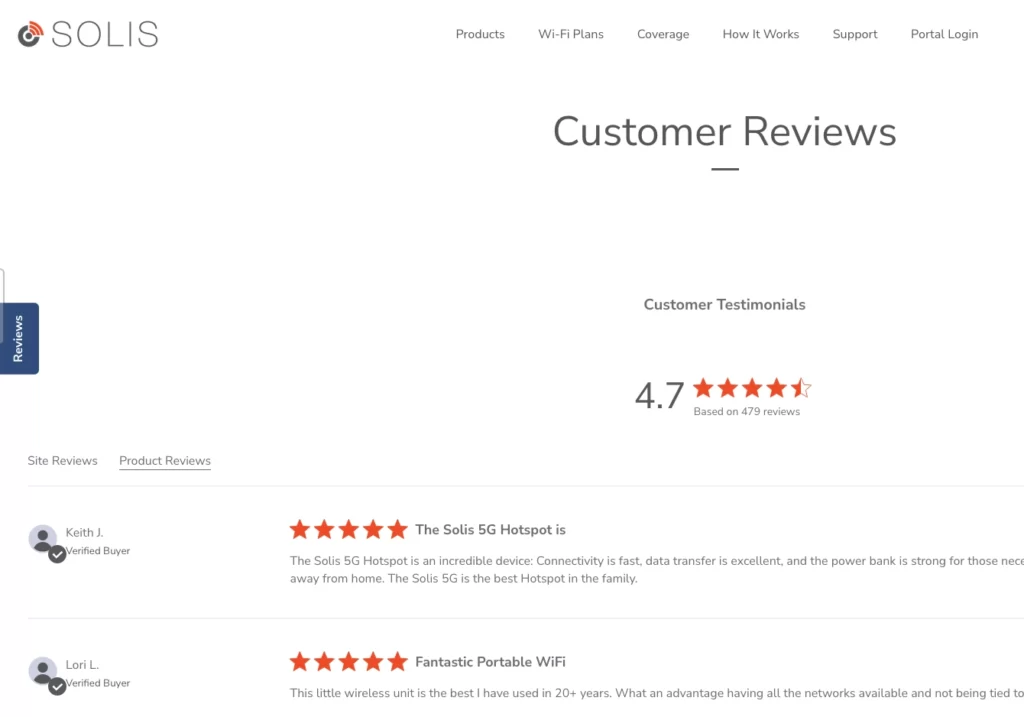
In their niche, these adventurous personalities lend central credibility. Readers want to envision themselves enjoying similar experiences.
10. Headspace
Headspace highlights the emotional impact of how their meditation app has changed customers’ lives:
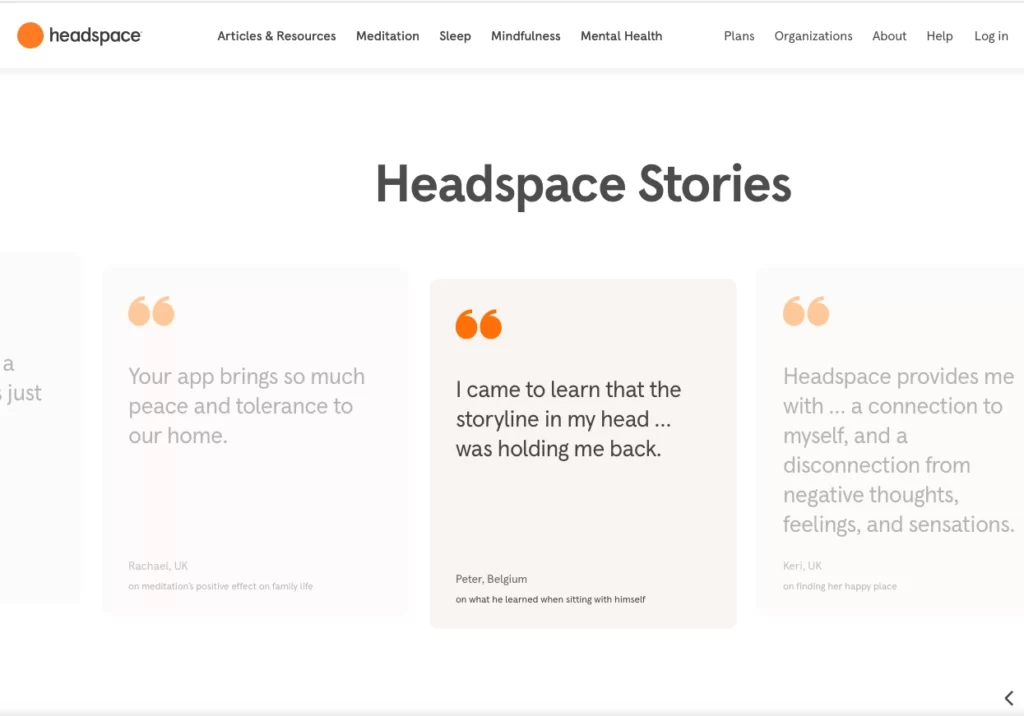
Connecting benefits to feelings customers will experience is very compelling.
11. Neil Patel
Even individual marketers leverage testimonials to build authority and trust:

Neil shows major publications featuring his work, plus client reviews. This establishes him as an expert worth listening to compared to others in his field.
Those are just 11 great examples of how brands creatively leverage customer testimonials for conversions.
Let’s dig into more best practices so you can gather and optimize your testimonials…
Best Practices for Customer Testimonials That Convert
Beyond gathering positive customer comments, you want strategic testimonials—well-rounded collections of customer stories, quotes, and examples that persuade.
Here are top tips for creating high-converting testimonials:
Get Specific & Detailed
Vague, generic positivity doesn’t offer much value. The best testimonials feature many specifics – mentioning product names, quantifiable objectives achieved, and precise improvements experienced. These details tell a convincing story to readers.
Showcase Various Use Cases
Collect testimonials highlighting different audiences and ways your offering gets used. Showcase diverse sizes of companies, various niches, specific personas, and unique ways you solve problems. The broader the range of reader experiences reflected, the more potential customers will relate.
Incorporate Images, Videos & Logos
Mixed media makes for more compelling testimonials. Customer videos let visitors see and hear people explain their positive experiences in their voices. Logos demonstrate brands you work with. Photos help readers envision themselves enjoying your solution.
Curate an Ongoing Showcase
Don’t just stick a few testimonials in the footer and forget them. Feature new customer quotes and stories routinely in blogs, case studies, and dedicated testimonial pages. Make this social proof a living section that stays fresh and interesting.
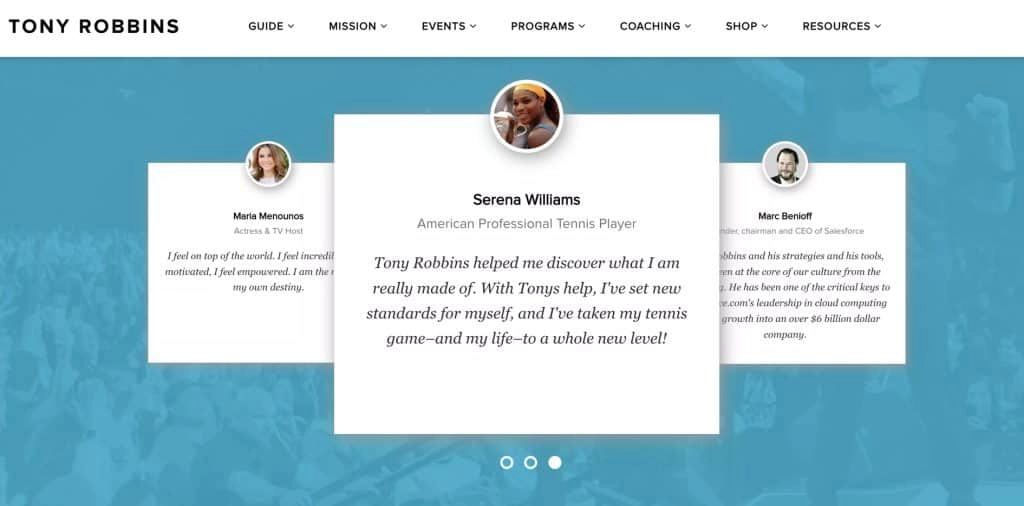
Collect From Various Touchpoints
Actively seek customer reviews across different platforms – not just curated testimonials on your site. Monitor app store ratings, pursue positive reviews on Google, Facebook, and industry forums, and frequently check third-party review sites. Consolidate this authentic feedback for marketing.
Simplify Scanning & Readability
From sorting testimonials by persona to using short paragraphs and bullet points for critical details – optimize your content for easy reading. Use emphasis formatting like testimonial side quotes, customer logos, section headlines, and any visual elements to help visitors quickly scan for info relevant to them.
Keep It Genuine
Most fundamentally, all testimonials must be honest. Fake or severely doctored reviews erode trust rather than build it. Ensure featured quotes, stories, and case studies authentically reflect typical user experiences.
Getting these testimonial best practices right pays dividends in the experiences and conversions of future customers. You earn customer trust and absolute authority that the best marketing can’t fake.
Now let’s address some common questions businesses have around testimonials…
Frequently Asked Questions About Leveraging Testimonials
Here are answers to 10 FAQs around gathering and optimizing customer testimonials:
1. Where is the best place to display testimonials?
Start by prominently featuring curated testimonials on dedicated pages that visitors can browse. These should sort reviews by persona, niche, and other filters to showcase relevant stories.
You also want testimonials embedded directly within crucial product and service pages: quotes, ratings, logos, and integrated videos where visitors learn about those offerings.
Finally, rotate fresh testimonials across blogs, case studies, emails, ads, and social posts. These channels help keep your proof points dynamic rather than static.
2. How do you get customers to give testimonials?
The easiest way is to ASK! Many happy customers will provide references and reviews; you must request them directly. Especially right after an outstanding client experience, ask if they’d be willing to provide some quick feedback on their experience.
It also helps to make the actual process of sharing very quick and easy through prepared testimonial templates and formats. Finally, incentivizing customers with discounts, premium gifts, or early access to new features can elicit more testimonial responses.
3. Should testimonials include negative reviews?
Generally, testimonial selection should feature your best, most enthusiastic advocates. You want to convince interested visitors to buy from you, not question that decision. A few constructive critiques can make your praise seem more genuine, but focus on your happy customers.
However, for complete transparency, any central platform should consolidate feedback from review sites and social platforms to address and improve consistent negative feedback. So, use negative critiques for business improvement rather than front-and-center testimonials.
4. Are video testimonials more effective?
Absolutely – video testimonials can make for some of your most persuasive proof. According to success stories by Animoto, 92% of consumers say video helps them make buying decisions. Customer videos let visitors see and hear authentic experiences from real users, building trust.
Platforms like Vidyard make it super easy to gather customer videos at scale. While written testimonials still have value for quick skimming, video testimonials deliver a more significant emotional impact.
5. What information should a good testimonial include?
The best testimonials feature these core details:
- Specific product or service praised
- A headline/summary statement of the main value received
- Quotes and commentary explaining the customer’s experience
- Emotional impact describing how you helped them
- Callouts of stellar service or support interactions
- Any quantifiable objectives/results achieved
These specifics tell a compelling story of you solving real problems for actual customers.
6. Should I pay customers for testimonials?
You generally don’t want to directly compensate customers only for giving positive testimonials about your brand. That incentive introduces bias rather than earning authentic praise.
However, running testimonial contests or giveaways for customers who provide great feedback can work well. For example, “The 5 most detailed testimonials this month will get a $100 gift card.” This rewards customers for effort while keeping the content itself organic.
7. Can I use testimonials from social media?
Absolutely! Positive reviews, comments and mentions from genuine customers on social platforms make fantastic, authentic testimonials to re-share. Just be sure you comply with each site’s attribution policies if you repurpose elsewhere – e.g. crediting an @TwitterHandle with the quote.
Social media testimonials come pre-validated from real customer experiences. Tools like Pancake make it easy to discover and manage online reviews across sites.
8. How do you organize customer testimonials?
Some best ways to structure your testimonial content includes:
- By Persona – Quotes and stories focused on specific buyer roles
- By Industry / Company Size – Testimonials sorted into business niches
- By Use Case – Customer proof points grouped by challenges solved
- By Objective – Testimonials clustered into goals achieved
This makes it easy for visitors to self-select the most relevant proof points to them. Other best practices are incorporating logos, images and calls to action to request a demo after impactful testimonials.
9. How many testimonials should I have?
Ideally, build an extensive, ever-growing library of 100+ customer testimonials. Then you have diverse content to pull from. But even featuring just a few, detailed stories can offer powerful proof.
Most important is curating your highest-quality testimonials rather than any particular quantity to feature. ROI should come from conversions generated rather than number of testimonials alone.
10. How often should you refresh testimonials?
You’ll want to continually be adding new testimonial content rather than letting your proof points go stale. Aim to seek and showcase new customer stories at least once per quarter to keep the social proof on your site dynamic.
Promote this ever-growing advocacy through dedicated emails, blog content and social media posts highlighting your newest happy customers. Feature these fresh testimonials prominently.
Great testimonials tell an ongoing story that builds over time – not just a static section. The more success experiences you can gather and broadcast from diverse, representative customers, the greater influence that proof will offer – so never stop collecting reviews!
Gather More Reviews to Create Converting Testimonial Pages
An optimized, well-promoted testimonial page should become a pivotal asset driving conversions for your business. Following the best practices outlined here will help you systematically improve customer advocacy:
- Actively request more video, image and text reviews
- Curate the best stories for personas and use cases
- Feature compelling proof through visual formats that perform
- Prominently embed social proof across the customer journey
By continually expanding genuine customer testimonials, you build trust and credibility that convinces new visitors to confidently buy from you as well.
The examples here offered inspiration for all types of businesses who leverage reviews – from global software platforms to local professionals. Use these concepts tailored to your niche. Experiment with different testimonial placements and formats to maximize impact.
Finally, monitor the measurable influence of well-optimized testimonials on your conversions over time. Let this real customer advocacy compound working for your business as you expand your customer base!




Leave a Reply